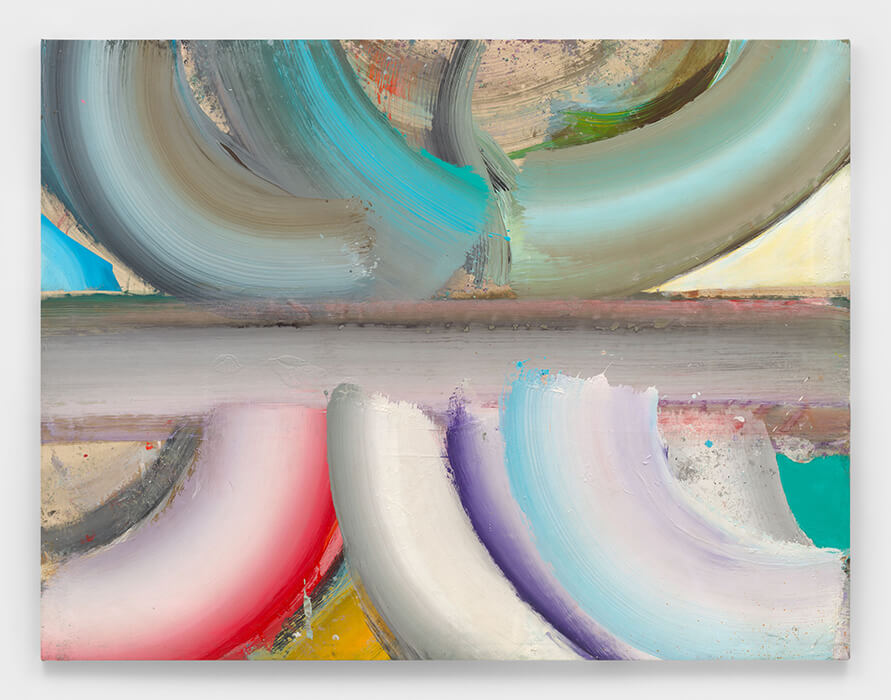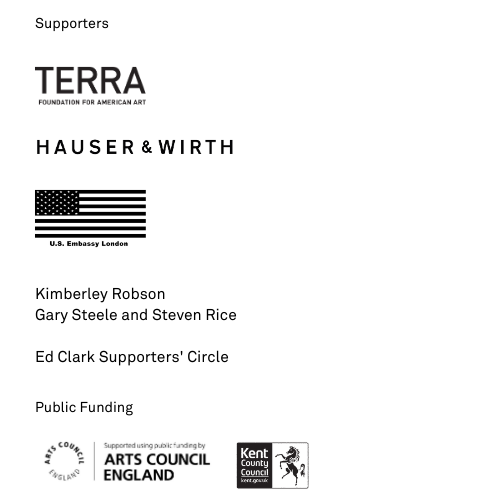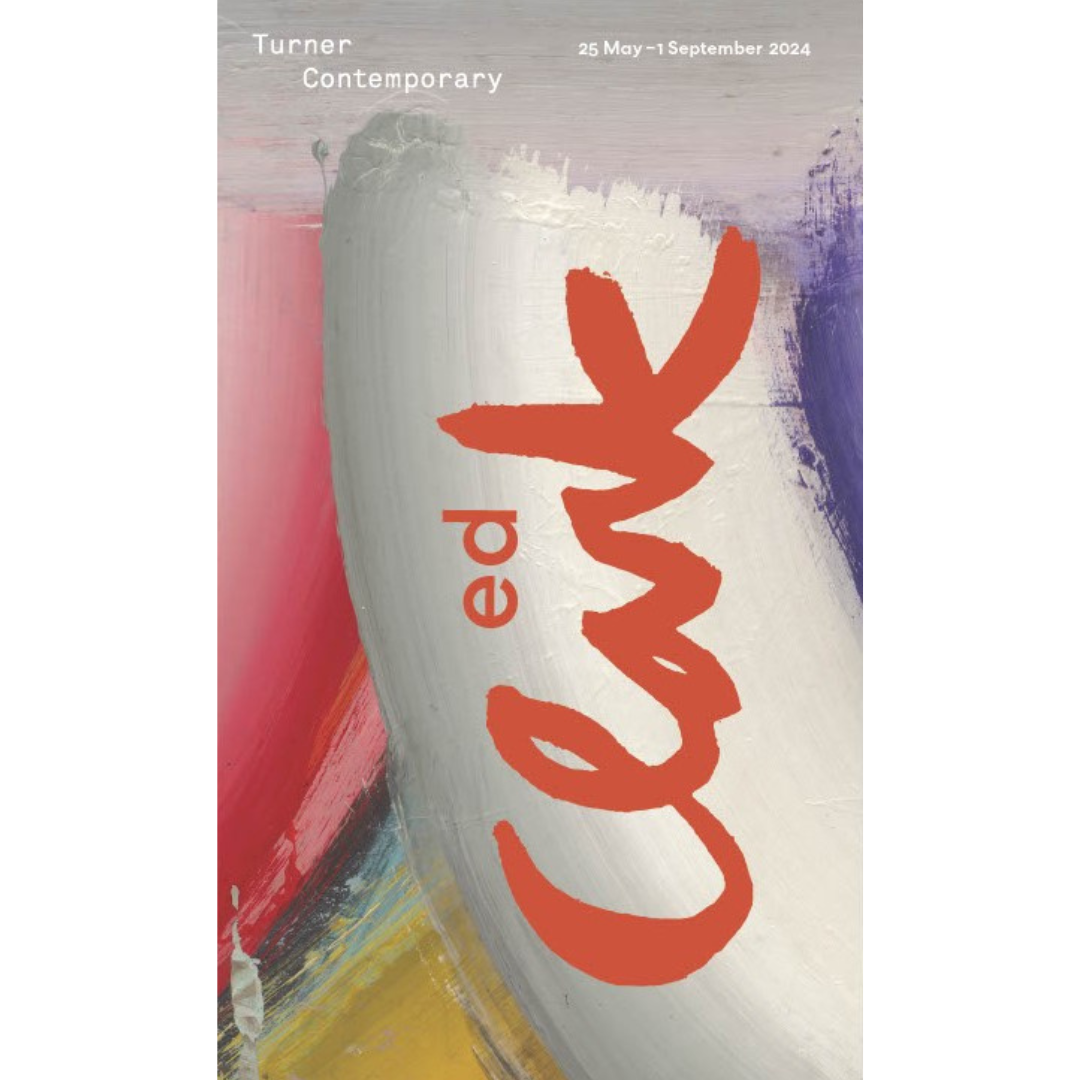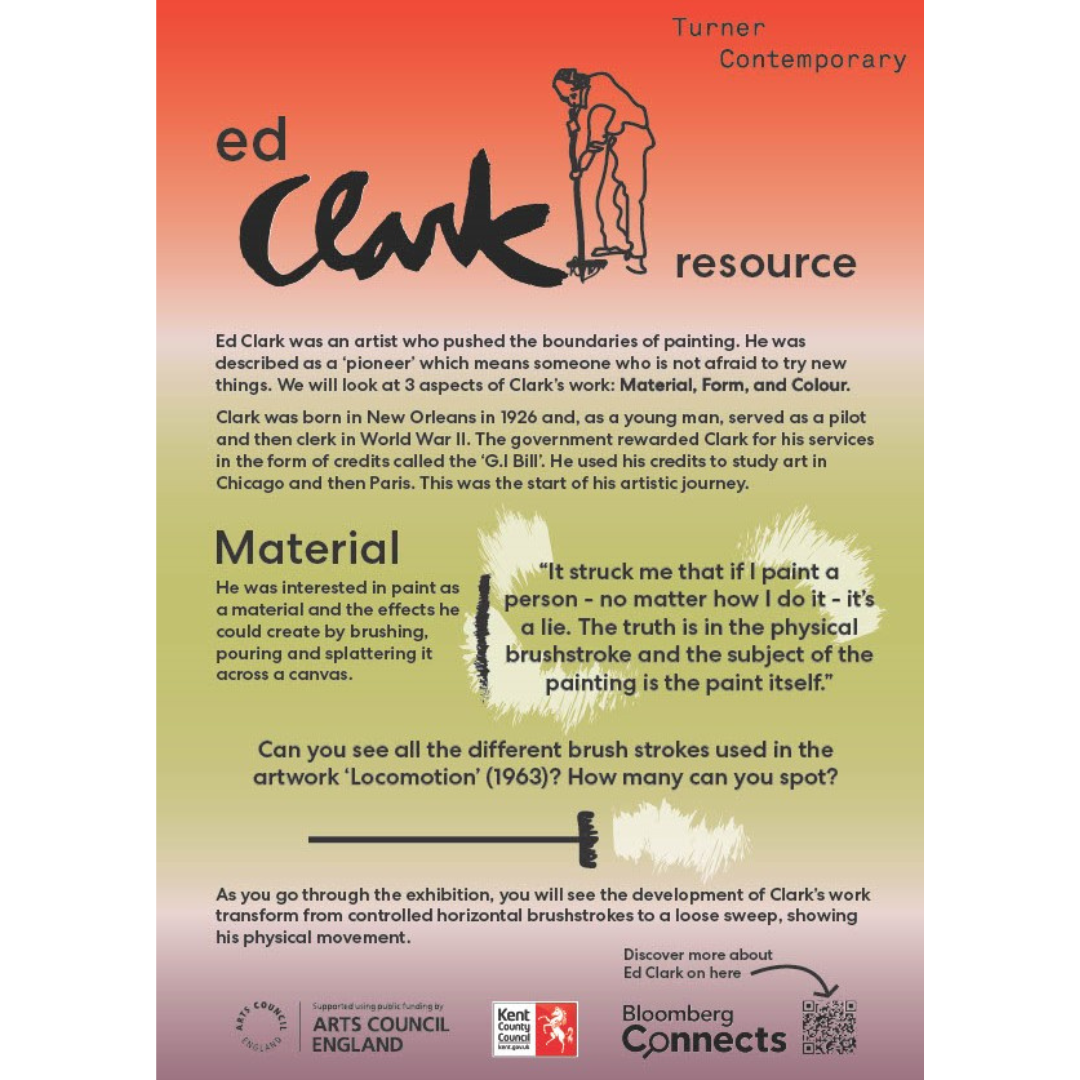
 Ed Clark in his New York studio, 1975 © The Estate of Ed Clark. Photo: Dwight Carter.
Ed Clark in his New York studio, 1975 © The Estate of Ed Clark. Photo: Dwight Carter.
Ed Clark
First Floor Galleries
Turner Contemporary is pleased to present the first institutional exhibition in Europe dedicated to pioneering artist Ed Clark.
Canvases are at once free and composed, finely balanced between the majestic splashiness of abstract expressionism and a more ironic 1960s mood. A journey to New York’s golden age.
Turner Contemporary presents the first institutional exhibition in Europe dedicated to pioneering artist Ed Clark (1926-2019). The exhibition unites paintings and works on paper from the 1940s to 2000s, including loans from The Art Institute of Chicago, Brooklyn Museum and Detroit Institute of Arts, many of which have not been seen outside the USA.
Though late to receive international acclaim, Clark’s contributions to contemporary art were significant, notably through his innovative push broom technique and shaped canvases. Today, Clark is recognised as a groundbreaking figure within the New York School of Abstraction.
Born in New Orleans and raised in Chicago, Clark used credits from his G.I. Bill to attend the prestigious Art Institute of Chicago from 1947 to 1951. In 1952, he furthered his studies at the Académie de la Grande Chaumière in Paris, where he would return to make work for the rest of his life. Clark’s experiences in the bohemian quarter of Montparnasse and, later, New York’s downtown scene deeply influenced his shift towards abstraction and working on a large scale. In 1956, he adopted the use of a 48-inch push broom to allow him to drive paint across the canvas with great force, a technique known as ‘the big sweep’ and exemplified in works such as Locomotion 1963. On his return to the US that year, Clark settled in New York, where he co-founded the influential Brata Gallery and created Untitled 1957, a seminal piece in the evolution of shaped painting and a highlight of the exhibition’s section devoted to Clark’s early canvases.
Travel and how a sense of place profoundly influenced Clark’s work will be at the heart of the exhibition. In 1971, visiting artist Jack Whitten in Crete proved transformative. As the Mediterranean light inspired a new colour palette, so it motivated him to seek out different lights and atmospheres, including in Nigeria, Brazil, Mexico, Egypt, China and Japan, as well as across the US. This theme is explored in depth throughout the exhibition with works on paper and paintings including Untitled 1970 – an example of his oval-shaped canvases first made in Vétheuil, France – Untitled from Louisiana Series 1978-80 and the dazzling Ife Rose 1974.
Set against the expansive North Sea, Turner Contemporary is uniquely placed to explore how, as one contemporary critic observed, Clark’s canvases registered his “sensitivity to the pigmentation of the earth and the colour of the skies”.
The exhibition concludes with key examples of paintings from the mid-1980s to 2000s, a period when Clark brought new structures to his compositions with sweeping rainbows, tubes, and waves of colour. Seen together, these works underscore Clark’s enduring fascination with his material. In his own words, “The paint is the subject.”
I have never seen the galleries at Turner Contemporary look so good. The North Gallery in particular, flooded with cool light through high ribbon windows, could have been made with this group of paintings by Ed Clark in mind. A series of shimmering horizontals, rippling with colour, lead the eye from one canvas to the next. It is as if sea and air and light were distilled into paint.
His palette is at once dissonant and harmonious and his broad, broom-size brushstrokes convey remarkable visual eloquence.
He made paintings distinguished by their energy, drama and generous strokes of seductive colour.
It has a visceral energy, but also a stillness. It was the perfect depiction of the energy I’ve found living by the sea.
Raymond Antrobus
Book tickets
Shop the collection
Exhibition Guides
Recommended Resources

The Big Sweep
Jake Brodsky (ed.), L. Berrin, Ed Clark, Michel Conil-Lacoste (et al.), 2023
This book—the definitive publication on Clark—recounts the story of Ed Clark’slife and work through reprints of important historical texts by authors including Darby English, Anita Feldman, Geoffrey Jacques, Kellie Jones, April Kingsley, and Corinne Robins; interviews with Clark by Quincy Troupe, Jack Whitten, and Judith Wilson; as well as photographs, letters, and ephemera from the archive of Clark’s estate and his papers at the Archives of American Art, Smithsonian Institution, Washington, D.C.

Ed Clark, Paris Series #2, 1987 © The Estate of Ed Clark. Photographer: Dan Bradica
An Oral History with Edward Clark by Jack Whitten
BOMB magazine, 2014
Part of The Oral History Project, dedicated to collecting, developing, and preserving the stories of distinguished visual artists of the African Diaspora.

A Brush with Success (Parts 1 and 2)
Charles Martin, 2007
This 30-minute documentary film by Charles Martin brings together Clark at work, and interviews of him and other artists, critics and commentators.

1971, A Year in the Life of Color
Darby English, 2017
In this book, art historian Darby English explores the year 1971, when two exhibitions opened that brought modernist painting and sculpture into the burning heart of United States cultural politics: Contemporary Black Artists in America, at the Whitney Museum of American Art, and The DeLuxe Show, a racially integrated abstract art exhibition presented in a renovated movie theater in a Houston ghetto.

Americans in Paris: Artists working in Postwar France, 1946 – 1962
Mark Godfrey, 2022
Americans in Paris: Artists Working in Postwar France, 1946–1962 delves into the various circles of artists who lived in France following World War II. Featuring new scholarship and illuminating essays, this groundbreaking volume illustrates many of the paintings, sculptures, drawings, prints, photos, and films produced during these fertile years.

The Soul of a Nation Reader: Writings by and About Black American Artists, 1960-1980
Mark Godfrey (editor), Allie Biswas (editor), 2021
A comprehensive compendium of artists and writers confronting questions of Black identity, activism and social responsibility in the age of Malcolm X and the Black Panthers, based on the landmark traveling exhibition.












